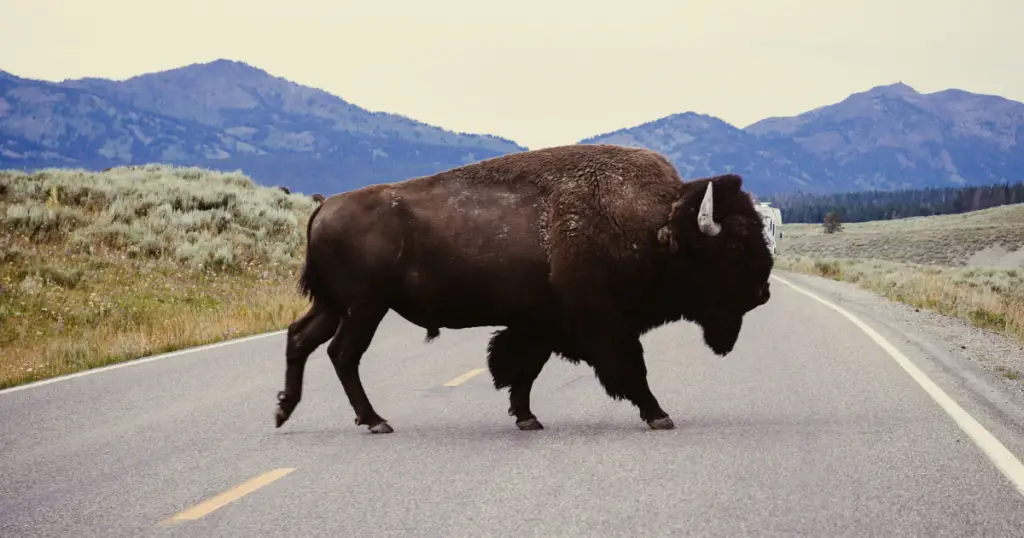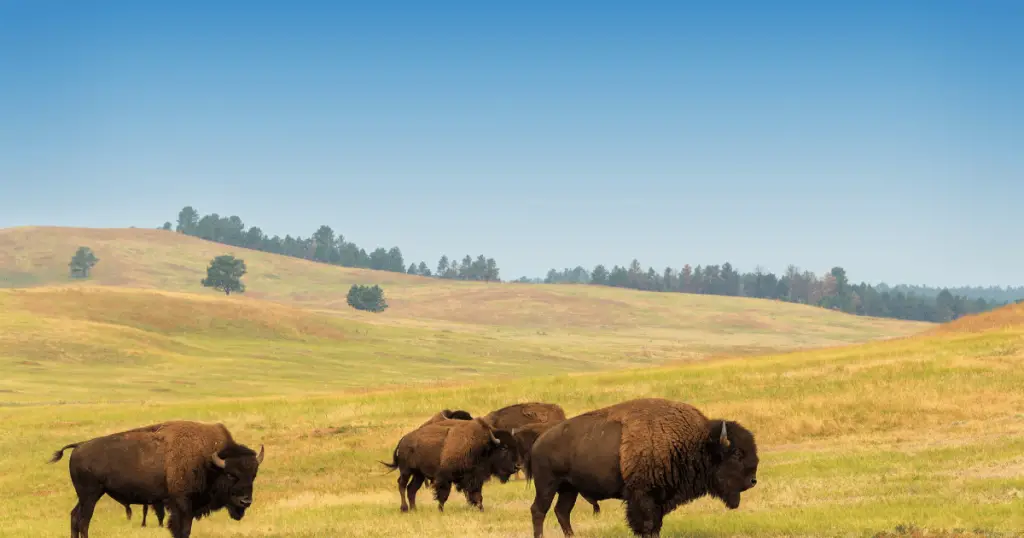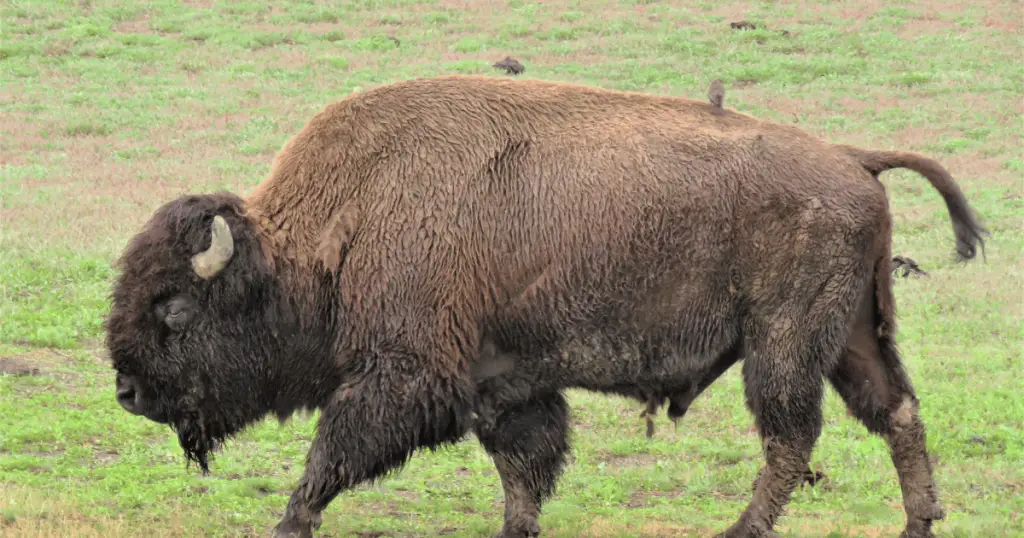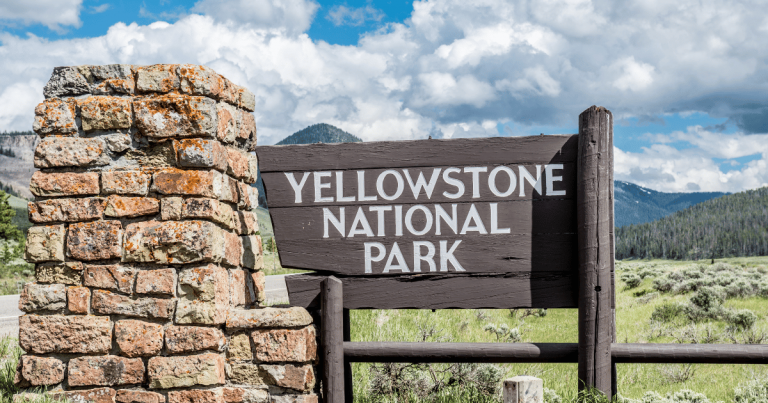Everything You Need to Know About Bison Attack in Yellowstone
Yellowstone National Park is an ideal place for nature enthusiasts who appreciate the tranquil allure of natural springs, geysers, and wildlife. However, Bison attacks in Yellowstone do occur. Although most animals in the park are typically harmless, bison can potentially threaten visitors. It is essential to know how to remain safe when in their vicinity.

Introduction to the American Bison
The American Bison, also known as the American Buffalo, is an iconic symbol of the American West. These majestic creatures are the largest land animals in North America, with males often weighing in at over 2,000 pounds. Despite their formidable size, bison are agile and can reach up to 30 miles per hour.
Historical Context of Bison in Yellowstone
In the 19th century, the American bison population plummeted due to unregulated hunting and habitat loss. Once numbering in the millions, by the late 1800s, fewer than 1,000 bison remained.
At the brink of extinction, conservation efforts were initiated to save the American bison. Yellowstone National Park was instrumental in these efforts, providing a sanctuary where the bison could recover. In 1902, 21 bison were reintroduced into the park.
Current Status of the Bison Population in the Park
Today, thanks to conservation efforts, the bison population in Yellowstone has rebounded significantly. The park is now home to nearly 5,900 bison in 2022, giving visitors a unique opportunity to witness these majestic animals in their natural habitat.
Bison Behavior and Attacks
Although bison are generally docile animals, they can become violent in certain situations. If you encounter a bison in the park, it’s important to remain calm and keep your distance.
Bison have been known to charge at people if they feel threatened or startled. In extreme cases, these charges can result in serious injury or even death.
Explanation of Bison Behavior and Temperament
Bison, despite their imposing size, are typically calm creatures. They are not naturally aggressive towards humans unless provoked or threatened.
Bison spend most of their time grazing, moving slowly across the landscape, and maintaining a substantial distance from park visitors. However, they protect their space and herd, especially during the calving season.
Factors Leading to Bison Attacks
As mentioned, bison will typically attack if threatened or provoked. Several factors can trigger a bison attack, including:

Protective Behavior During Calving Season
During the calving season, female bison become particularly protective of their newborn calves. They will perceive any approach, even at a considerable distance, as a potential threat and may charge to defend their young.
Encroachment on Personal Space by Park Visitors
Bison are extremely sensitive to encroachments on their personal space. Park regulations recommend maintaining a distance of at least 25 yards from bison. Unfortunately, visitors often ignore these guidelines, approaching too closely for photographs or out of simple curiosity, triggering an aggressive response.
Agitation Caused by Human Interaction
Direct or indirect human interaction can agitate bison. This includes attempts to feed them, loud noises, or even the presence of pets. Human activity can stress the animals, resulting in unpredictable behavior and potential attacks.
Discussion of Previous Bison Attacks in Yellowstone
There have been several recorded instances of bison attacks in Yellowstone. In most cases, these attacks resulted from humans coming too close, deliberately or inadvertently.
The injuries sustained during these attacks can be severe due to the bison’s formidable strength and speed.
Visitors to the park are strongly encouraged to keep a safe distance from all wildlife and respect the bison’s space to ensure their safety and the well-being of these magnificent creatures.
Notable Bison Attack Incidents
Visitors need to know the potential dangers when encountering Bison in Yellowstone National Park. Unfortunately, there have been several instances where these powerful animals have attacked individuals. Being informed about these cases can help visitors take necessary precautions and stay safe.

Older Women Gored
As reported by Dailymail.co.uk in June of 2022, there was an unfortunate incident where a woman from California was repeatedly attacked by a wild bison at Yellowstone National Park in 2020.
The 72-year-old, who remains unnamed, had approached the animal at the Bridge Bay Campground campsite to capture a photograph.
However, things turned dangerous as the bison responded aggressively and attacked the woman multiple times. It is important to remember that wild animals are unpredictable and should be observed from a safe distance to avoid any potential harm.
Bison Toss Nine-year-old Girl
As The Guardian reported, a nine-year-old girl had a frightening experience when a bison charged at a group of around 50 visitors standing too close to the wild animals at Yellowstone national park.
The bison tossed the girl into the air, making her another unfortunate victim in the growing list of casualties resulting from individuals approaching animals or taking dangerous selfies on perilous ledges or near wildlife in some of America’s most breathtaking nature spots.
F. Park Authorities’ Response and Visitor Education
In response to the previous incidents, park authorities have taken numerous steps to educate visitors about bison behavior and safety.
The park has increased signage in areas where bison are frequently encountered, warning visitors to maintain a safe distance from these animals. Park rangers also provide more in-depth instruction during orientation sessions and tours.

Bison Safety Guidelines and Regulations
Park authorities have set guidelines and regulations to ensure visitor safety. Visitors are always recommended to stay at least 25 yards away from bison. Provoking, feeding, or approaching wildlife is strictly prohibited, and violators may face penalties.
Signage and Educational Materials in High-Risk Areas
Signage and educational materials are strategically placed in high-risk areas to educate visitors about bison behavior and safety. These include areas with frequent bison sightings or incidents, such as campsites and popular trails. The materials provide comprehensive information about the dangers of approaching bison too closely and guidance on reacting if a bison charges.
Measures Taken by Park Rangers to Manage Human-Bison Interactions
Park rangers actively manage human-bison interactions to prevent potential incidents. These measures include patrolling high-risk areas, providing on-site education to visitors about bison behavior and safety, intervening when visitors ignore safety guidelines, and taking necessary actions during emergency situations.
Effectiveness of These Measures in Reducing Bison Attacks
The measures taken by park authorities have proven to be effective in reducing bison attacks over the years.
Awareness of the risks associated with approaching bison too closely and understanding the importance of following park guidelines have significantly reduced the number of incidents.
However, occasional incidents occur, often resulting from visitors ignoring safety guidelines. Continually educating visitors is crucial to maintaining this downward trend in bison-related incidents.
Conservation and Coexistence Efforts
In addition to visitor safety measures, Yellowstone National Park is also actively engaged in conservation and coexistence efforts.
The park has been working with local ranchers to mitigate human-bison conflicts and preserve the habitat of these animals through designated grazing areas.
Importance of Bison Conservation in Yellowstone
Bison are an integral part of the Yellowstone ecosystem, contributing significantly to its biodiversity. As the park’s most giant herbivores, they play a crucial role in shaping the landscape, influencing vegetation patterns, and providing food for predators and scavengers.
Their conservation in Yellowstone is thus essential for maintaining the ecological balance and preserving the park’s natural heritage.
A balance between Protecting Bison and Ensuring Visitor Safety
Balancing bison conservation with visitor safety is a persistent challenge for park authorities. While bison are protected within the park’s boundaries, ensuring the safety of millions of annual visitors is equally paramount.
To achieve this balance, park authorities emphasize visitor education and strict adherence to safety guidelines. Wildlife viewing etiquette, when followed, can significantly reduce the risks associated with close human-bison encounters.
Collaborative Efforts between Park Authorities, Researchers, and Conservation Organizations
Collaborative efforts between park authorities, researchers, and conservation organizations are vital in managing bison populations and promoting human-bison coexistence.
Research initiatives help improve understanding of bison behavior, contributing to developing more effective management strategies.
Conservation organizations assist in raising awareness about the importance of bison conservation and the need for responsible wildlife viewing practices.
Conclusion: Bison Attack in Yellowstone
Bison incidents at Yellowstone National Park underscore the critical need for visitor education and adherence to safety guidelines. While park authorities have implemented comprehensive measures to manage human-bison interactions and ensure visitor safety, the full effectiveness of these measures relies on visitors’ understanding and respect for the park’s wildlife.
Collaborative efforts between park authorities, researchers, and conservation organizations have significantly balanced bison conservation and visitor safety. However, continual efforts need to be undertaken to sustain this balance. Thus, the onus also falls upon visitors to Yellowstone to respect the park’s guidelines, maintain safe distances from wildlife, and contribute to preserving one of America’s greatest natural treasures.







